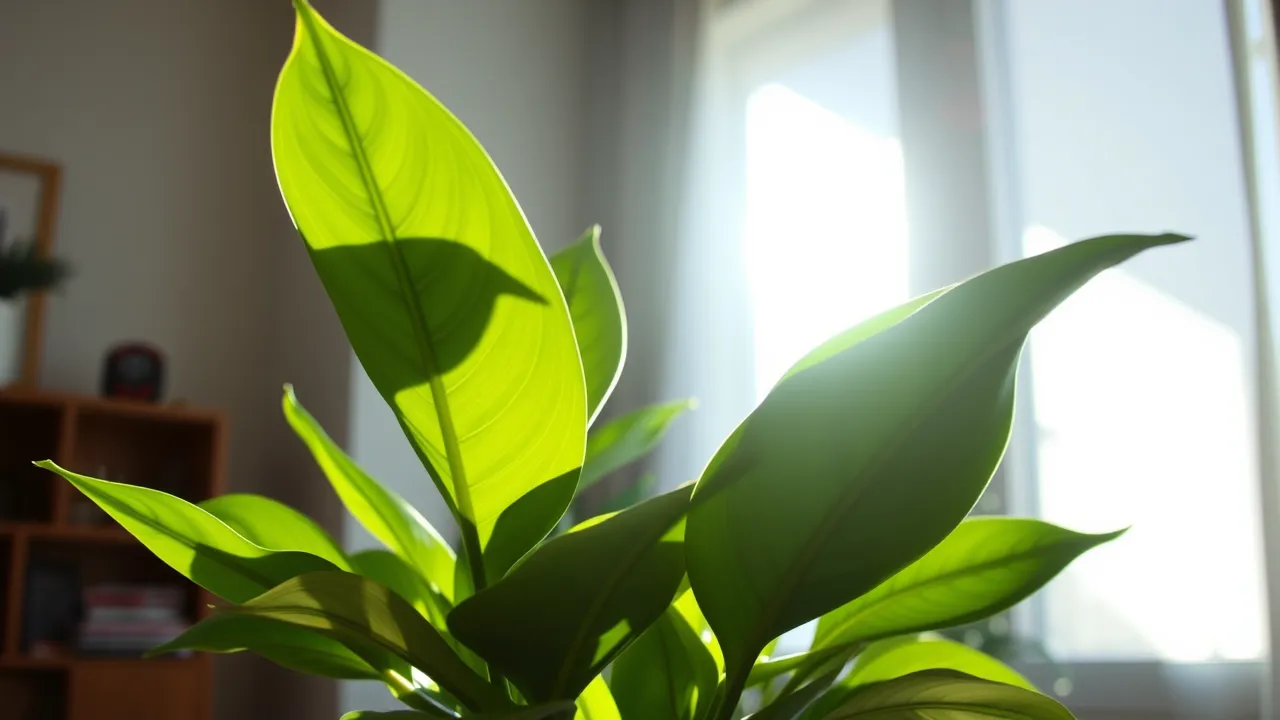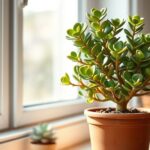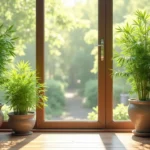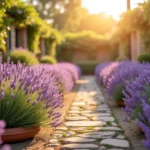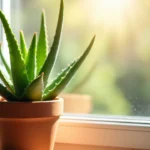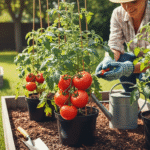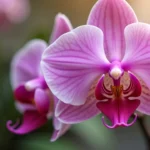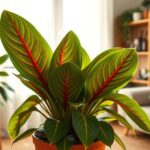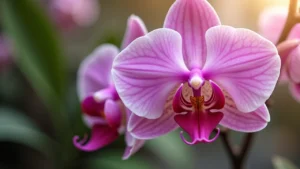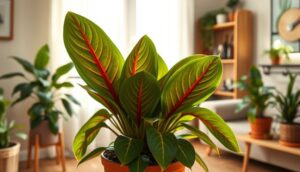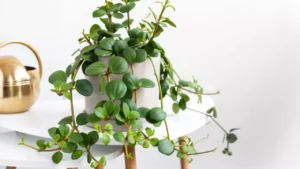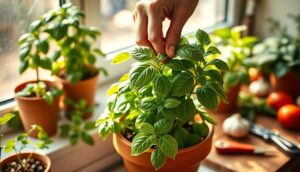Zanzibar Gem, also popularly known as the ZZ plant, is one of the most popular indoor plants. These can withstand harsh conditions. As a result, people believe that the ZZ plant is almost impossible to fail.
ZZ plant light conditions are diverse and they can endure changes to a great extent. Some gardeners even claim that these unique plants can survive in the absence of natural light. But can you trust these words?
As we all know, ZZ Plants are extremely adaptable to a wide range of environmental conditions. But, there is a distinction between the conditions they tolerate and the conditions they require to grow properly in.
Let’s burst the myth and find the truth about zz plant lighting conditions.
Table of Contents
Do ZZ Plants Need Sunlight?
Almost all plants require light to survive. Yes, it is quite true that ZZ plants can survive for a short time without light, but they need it to grow. But why is zz plant lighting so important?
Photosynthesis is a process that all plants, including the ZZ plant, use to produce food and energy.
It requires natural lighting as well as carbon dioxide. The zz plant will use these elements to produce sugar and oxygen. The sugar is then used as an energy source by the plant. The ZZ plant will most likely store the little energy it produces to survive.
So, what happens if your zz plant doesn’t receive adequate light?
Your green friend will not be able to photosynthesize effectively. It will naturally impact the zz plant’s health and growth. Your plant may die due to a lack of energy.
How Much Light Do ZZ Plants Need?
Ideally, zz plant light requirements are low-medium conditions. As a result, bright indirect light for 8-10 hours per day would do a great job in healthy growth.
Your zz plants can also withstand some direct morning sunlight, but you should protect them from the harsh afternoon sun. It may cause leaf burn. At the same time, extremely poor lighting may cause ZZ plants to droop and wilt. You should strike a balance between the zz plant light levels.
What do zz plant light levels mean?
The plant light levels vary depending upon the sunlight they are receiving. Any sunlight will trigger photosynthesis reflected off surfaces coming in from a nearby window. The same effect can be achieved with grow lights.
Photosynthesis requires a certain amount of light for plants. Succulents are native to open rocky areas and require a lot of direct sunlight. In contrast, tropical forest plants that provide shade under trees need indirect light.
Many gardeners have their version to translate zz plant lighting into what we can find indoors, and this can lead to some misunderstandings. Let me sort out the things for you:
Bright Direct Light:
The sun’s rays directly hit the plant’s leaves outdoors or through an uncovered window. Most plants will burn in direct sunlight, but some succulents might thrive.
Bright Indirect Light:
This zz plant lighting is ideal for all plants. This location is very close to a window and free of objects that receive a lot of light but do not directly face the sun’s rays.
Filtered Light:
Direct light has been filtered through another object, such as a sheer curtain, to create conditions similar to bright indirect light.
Medium Light:
Places are bright but not as intense as those closer to the window but are a little further away.
Low light:
You can find these places far from windows or in room corners. Low-light does not donate ‘no light’ (as in no windows or sunlight) but relatively low-intensity light.
How to Test ZZ Plant Light Levels in Your Home
You can determine the amount of light your zz gets in different ways:
You can easily check this by placing your hand between the plant and the light source. The more intense the light is, the stronger the shadow you cast on the plant.
If there is indirect light, it will cast a soft shadow, whereas direct light casts almost no shadow.
If you are still overwhelmed about the zz plant lighting, you can take the help of the technologies. Smartphone apps can measure the intensity of light in your home in footcandles. Although, these apps are not always the most accurate.
You can also invest in a specialized light meter for the most precise reading.
Which windows are ideal to fulfill zz plant light requirements?
It is one of the frequently asked questions among gardeners, and why not? We all want our zz plants to give the best conditions for healthy growth.
Ideally, most sunlight enters through south-facing windows. These windows will be exposed to sunlight all day long as the sun moves from east to west. So, picking this would be ideal.
However, they receive the most direct sunlight, so move houseplants away from the window if your zz plants require indirect light. The next sound option will be east and west-facing windows. They receive morning or afternoon sun for up to half of the day, giving a healthy zz plant sun.
North-facing windows receive the least sunlight and are thus not the best location for a ZZ Plant.
Which is the best place to put your zz plant?
The best location for your ZZ Plant is one that receives 12 hours of bright, indirect sunlight per day.
Generally, it would be a light-filled room with south-facing windows. The sun will provide plenty of soft, indirect light in the room. You should not place your zz plant far enough away from the window that direct sunlight will not reach it.
Aside from light requirements, you should keep your ZZ in a temperature-controlled environment. Examine your plant’s health and reaction to the surroundings. Drafts can occur in areas near exterior doors or near a heating or air conditioning vent.
So, when you know zz plant light requirements play an essential growth factor, what happens when they don’t get any light? How is your ZZ plant affected, and how to save it?
What Happens When My ZZs Don’t Get Enough Light?
While zz plant lighting varies a lot and can tolerate low light conditions for short periods, it doesn’t mean they should. They will begin to struggle if left in low light for an extended period.
When the ZZ plant light requirements are not enough, you can witness these changes in your plant:
- Foliage deficiency
- Droopy leaves
- Leaning towards the light source
- Wet or soggy soil
- Restricted Growth
- Leggy development
- The rot of the roots
If your ZZ plant is kept in poor lighting conditions for a long time, it will suffer and wilt.
What to do?
As soon as you notice the first possible sign, you should move them to a bright, well-lit location. However, if you ignore these warning signs, your zz plant may perish.
Restricted growth is the most obvious indicator. The plant requires more light if the stems stretch toward the light source. It can become leggy rather than spread out evenly.
Your zz plant will not produce new stems or leaves. To overcome these situations, you can fertilize your ZZ plant. You can also need to repot your green plant if it has outgrown its current pot. Give your zz plant an appropriate temperature and humidity range.
You can also examine the direction of the stems and the distance between each leaf on the stem.
Can a ZZ plant get too much light?
You know zz plants adore low to medium lights and are known for being low-light plants. If the zz plant receives too much light, it will suffer the same fate as if it gets insufficient lighting.
You can burn your zz plants with too much direct light in the same way that we can get sunburned by laying on the beach for too long. In the case of the ZZ Plant, excessive direct light exposure will burn the leaves’ top layers, scorching the tissue and destroying the texture.
If you understood this issue early, you could still save your zz plant. Or, if the plant has been severely burned, you may notice that dried leaf ends have turned brown and are beginning to curl.
What are the symptoms of my zz plant getting too much light?
While ZZ plant light needs are moderate, direct sunlight can harm them a lot. Excessive light can destroy cells, damage chlorophyll within the leaves, and kill vital leaf tissue.
Some symptoms of excessive zz plant lighting are:
- The yellowing of the leaves
- Leaves curling
- Turning away from the light
- Brown, crisp leaves
- drooping stems
- Dry, flaky soil
- Looks dehydrated
What can you do?
If you notice these symptoms, your ZZ plant will likely receive too much light. You should switch the places of your zz plant immediately. You can also use sheer curtains or cloth to block out some of the light.
You can also trim down the yellow leaves and foliage. Clip the wilted part, and it will stimulate the plant’s growth hormone. In a few days, your zz plant will be healthy again.
What If I don’t have enough zz plant light?
People in urban cities like you and me don’t have enough sunlight in their homes. It may be due to the fact we live in apartments or flats, where there is no window to get us sunlight.
Or, some people who have a couple of plants frequently run out of “zz plant lighting,” forcing them to place plants in dimmer corners or dark hallways. Alternatively, you can place these zz plants in living rooms, including those without windows.
Don’t worry if you have a space or room that doesn’t get much sunlight! You can still set up a ZZ plant light requirement in these areas of your home if you provide them with a consistent light source, such as a grow light.
Artificial lights are light bulbs that artificially mimic the sunlight required by your ZZ Plant to thrive. When you don’t have sunlight by your side, you can take advantage of grow lights. You can supplement your zz plants with grow lights to keep them happy.
You can buy grow lights easily as they are available in various shapes, sizes, and materials. LED and compact fluorescent bulbs are the best options on the market because they work well and are consistent.
I recommend choosing a grow light that does an excellent job of imitating zz plant lighting in a low-light or no-light room.
How to place the grow lights?
- You should place the grow light about 18 inches above your ZZ Plant, away from the top of the foliage.
- You should examine your grow light setup because the closer it gets to the zz plant, the brighter the light becomes. If it gets too close to the plant, it will burn the delicate green foliage.
- If you place the grow light in a dark room and are solely dependent upon it, aim for at least 14-16 hours of light per day.
- It will ensure the plant gets the light it requires while still mimicking the normal daytime/nighttime cycle it is used to.
- You can aim for 12 hours of light daily in a low-light room.
Can I place my ZZ Plants Outside in the Summer?
Depending on your location, you can place your ZZ Plant outside in the summer to give it a much-needed energy boost. As you know, there are rules for indoor light exposure, and you can bet they apply to your ZZ Plant when it’s outside as well.
ZZ plants thrive in temperatures ranging from 65° to 75° Fahrenheit. They don’t like frost and can die if exposed to it for a long time.
ZZ plants like rain to an extent. However, heavy rains can overwater the plant, making the soil very soggy. On average, the summer months are the best time to put your ZZ Plants outside without worrying about temperature shock. You should wait until you’ve had a consistent number of days in the ideal temperature range with no unexpected dips or spikes before placing your green friend outside.
How to avoid temperature shock in zz plants?
To avoid shocking your plant, you should practice “hardening off.” It means that instead of leaving your zz plant outside all day and night, which can be stressful. You should gradually introduce it to the outdoor environment a little at a time.
Start by placing your ZZ Plant out for a few hours the first day and more the next. You should give your plant the time to adjust to new settings. Gradually increase the amount of time it’s exposed to over the next few days until it’s ready to be outside all day.
You should keep an eye on the weather forecast and notice any upcoming changes. If there are any uncertain changes, bring your plant inside if temperatures are expected to rise significantly or if severe weather is forecasted.
You should focus on the zz plant light requirements as it is as important as temperature. Remember that your friends prefer bright, indirect light, so consider placement outside to avoid accidentally burning your plant.
You can also choose some shaded or covered outdoor areas with plenty of bright light. Make sure the direct sunlight is not hitting the plant. Covered patios and overhanging porches are all excellent locations.
When you place your zz plant outdoors for better exposure, remember they tend to dry out faster. You should be more careful while watering them, so be mindful of your watering habits.
Do you know your zz plant can get problems that resemble low-light symptoms? Strange, isn’t it? While your zz plant may be suffering from different issues, you might be showering them with more zz plant light. Let’s get to know these problems and their solutions.
Some Symptoms that resemble low-light problems
I mentioned some of the things to look out for if you suspect your ZZ Plant isn’t getting enough light above. However, some of these symptoms can be challenging to detect or may be caused by something else.
So, if you witness any sign that your ZZ isn’t getting enough light but doesn’t recover when moved to a brighter location, you should look into another cause.
1) Slow or no growth
I’ve already stated that the lack of growth isn’t a particularly reliable indicator of a low-light situation. It is primarily because ZZ Plants are slow-growing by nature, but many other factors can also slow or stop the plant’s growth.
Underwatering, overwatering, fluctuations in the temperatures outside the optimal growth range or a lack of nutrients can all stunt growth. Suppose you’ve ruled out light exposure as the cause. In that case, you’ll need to go through each of these factors individually to see if anything else limits growth.
Also, you should keep in mind the time of year. ZZ Plants will most likely not grow much during their growing season (Spring to Early Fall). Similarly, they will almost certainly not grow at all during their dormancy in winter.
If you don’t see any growth during the winter, you may not have a problem. It is simply resting!
2) Drooping Branches/Leggy Growth
Many new gardeners may mistake drooping branches or sparse leaves for “leggy growth” when there’s something else going on. If you notice your zz plant drooping or losing its delicate leaves, it’s usually due to a more common problem.
Regarding ZZ Plant care, overwatering is the most common problem. A chronically overwatered plant will often have droopy branches and may begin to lose its leaves, leaving the plant looking sparse and unhealthy.
Keep an eye on your watering habits to avoid mistaking the serious problem of overwatering for a minor issue.
Conclusion
ZZ plants are nearly indestructible and can enhance the beauty of your home. But you shouldn’t let this fact ignore their basic needs, such as zz plant lighting and water.
If you give your plant good lighting, it can thrive and grow to be three feet long. However, you should be careful as the extremes of both more or less lighting conditions are harmful to your ZZ plant.
Whereas insufficient lighting can cause droopy and weak foliage, excessive lighting can easily scorch the leaves and foliage. As a result, you should maintain a balanced environment for healthy, green bushy growth.
Let me know what you prefer; zz plant sunlight or grow lights.

